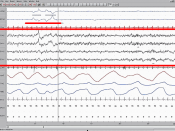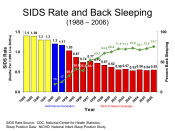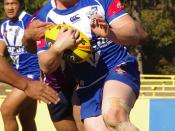Infants that sleep in a supine position have shown a decrease risk of sudden infant death syndrome (SIDS). Infants, however, seems to sleep in discomfort in a supine position and slept better in a prone position reported by many parents. The traditional swaddling practices have shown promising results in both keeping infants in a supine position and provide better sleep. Gerard and colleagues have devoted this research article to investigate the effects of swaddling infants on spontaneous arousals during sleep via a paired experiment to test for any significant differences in sleep behavior between swaddled and unswaddled state of infants.
To carry out this investigation, each of the twenty-six healthy infants aged between 73 to 87 days undergone alternation between swaddled and unswaddled trails during their normal naptime. Infants' sleep behaviors were measured in terms of their sleep state (i.e. rapid eye movement [REM] or quite sleep [QS]) via a set of behavioral criteria, electroencephalogram and electrooculogram.
Respitrace, submental and biceps electromyogram and video recording were used to monitor and detect behaviors such as full arousals, startles and sighs. The researchers suggested that safe form of swaddling would reduce spontaneous arousals in supine infants, this is supported by results such as decreased frequency in startles in QS and REM, and decreased full arousal in QS.
The article demonstrated in depth research, logical presentation using simple language and good coverage of various relevant topics at most times. However, some information should have been presented with more clarity. The question asked by Gerard et al. is clearly relevant. Given that SIDS is the leading cause of death during infancy (Byard, 1995), it is therefore important to investigate various issues related to minimizing occurrence of SIDS. Supine sleep have already shown to reduce the risk of SIDS, and an...


